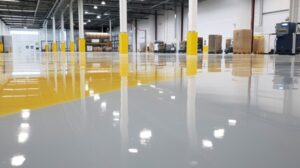If your bathroom needs a facelift, there are many considerations. Don’t get too caught up in aesthetics; functional design is equally important.
Proper ventilation is also essential, lowering the risk of mold and humidity-related issues. In addition, electrical upgrades may be required to add new lighting or fans. Click https://jrcsi.com/ to learn more.

A bathroom remodel is a great way to add value to your home and improve the quality of life. However, it’s important to plan for the cost of your renovation and budget accordingly. A full renovation can cost up to $10,000, depending on the scope of work and materials used. Setting aside 10-20% of your budget for unexpected costs, such as discovering water damage or unforeseen electrical issues, is also important.
The most significant cost factor in a bathroom remodeling project is labor. Generally, the average labor cost is $50 to $75 per hour, and it can make up 40 percent or more of your total budget. Homeowners can save on labor costs by doing some of the work, such as painting or installing new hardware. However, it’s best to leave plumbing and electrical work to professional contractors.
Another major cost factor in a bathroom remodel is the cost of materials. The price of materials depends on the type and quality of materials you choose. For example, basic materials like vinyl and laminate are less expensive than high-end materials such as granite or quartz. The final cost of a bathroom renovation will also depend on the size of the space and whether or not it’s a partial or full remodel. A full remodel will typically cost more than a cosmetic facelift because it requires demolition and structural changes.
In addition to these expenses, you’ll also need to consider other factors that can impact the cost of your bathroom remodeling project, such as the location of your property. For example, New York City has higher construction and material costs than other areas of the country. This can be attributed to higher living costs and stricter building codes.
Layout
There are many ways to organize bathroom layouts, and each has its pros and cons. For example, some layouts are better for storage, while others allow you to create a more spacious feeling. You should consider the size of the bathroom, your budget, and how you will use the space before deciding on a layout.
A basic layout combines a toilet, sink, and tub or shower into one large room. This layout is ideal for a small or medium-sized bathroom, and it can also accommodate a linen cabinet or closet. If you have a larger space, you can add a second sink or a free-standing tub.
Another option is to divide the bathroom into two smaller rooms by installing a bathtub in the center and a shower on either side. This layout allows you to keep more floor space for other fixtures, making it ideal for a larger bathroom.
Depending on the scope of your remodel, you may need to install new flooring, cabinets, and lighting. It is important to consider these elements when planning your budget because they can significantly increase the total cost of your project. You should also plan for any labor costs and add a contingency fund to cover unexpected expenses.
When estimating the cost of your bathroom remodel, be sure to include all the necessary materials and labor. This will help you avoid any unforeseen costs and delays. You should also factor in any costs for demolition and disposal of existing materials. In addition to these costs, you should consider the cost of hiring professionals such as plumbers and electricians.
It is also a good idea to hire an experienced contractor who can provide you with a comprehensive estimate. Choosing the right contractor can make your bathroom remodel project run smoothly and efficiently.
Before you begin your renovation, it is a good idea to develop an ideas file for your bathroom remodel. This will help you stay on budget and ensure that your vision for the perfect bathroom is realized. You can use a tool like Pinterest to store digital images of tile styles, fixtures, and clever designs that you love.
Materials
When it comes to bathroom materials, you want to choose stylish options that complement your décor and will stand up to years of moisture and exposure to the elements. Some high-end materials, such as natural stone and ceramic tile, may cost more than synthetic alternatives but will add beauty and a long-term investment to your home.
While a bathroom remodel is a great time to add a few new fixtures and features, it is important that you do not go overboard and create an unmanageable or cluttered space. When selecting fixtures, it is important to keep in mind the size of your bathroom, storage needs and how the fixture will be used. In addition, you should consider the cost of the fixtures as well as their installation costs.
One of the best ways to add a touch of style to your bathroom is by using decorative wall coverings. For example, a simple and easy-to-install wainscot can cover up minor scratches and dings and provides a unique aesthetic. Alternatively, you can opt for a plaster finish to add an aged and rustic look to your room.
Choosing the right flooring for your bathroom is another crucial element to consider. A variety of floor material options exist, including tile (natural or ceramic), vinyl, hardwood and cork. Tile offers traction and water resistance, while hardwood and cork offer a classic and elegant look. Vinyl is a cost-effective option that can come in a variety of styles and colors to suit any aesthetic.
There are also a number of different countertop materials to choose from when it comes to bathroom remodeling. Solid surface countertops like Corian provide a sleek and seamless appearance. They are durable and stain resistant. Granite and quartz are also popular choices for countertops. Granite and quartz are both highly durable materials that will stand up to moisture, heat and impact. Another trend in countertop materials is concrete, which can be customized to fit your bathroom design.
The final factor to consider when selecting bathroom remodeling materials is the color and finish of the material. There are a wide range of finishes to choose from, including chrome, brass, nickel and bronze. These finishes are easy to clean and maintain and will complement a variety of design styles.
Design
There is so much that goes into bathroom remodeling that, unless you’re a professional who does it every day or a homeowner who has gone through it before, all the nitty-gritty details, processes, options and choices can seem a bit foreign. However, understanding the basic tenets of the process is important so that you know what to expect and can communicate with your contractors clearly.
The first step is to determine your renovation goals. This will help you choose a style and design to fit your needs, as well as help your contractor understand what you want to achieve. Do you want to create a spa-like retreat, an open, airy space or something in between? Are you hoping to update your bathroom to increase its utility, like adding more storage or a separate shower-tub combination? Or do you plan to sell your home in the future, so you’ll need to keep accessibility and resale value in mind?
Next, you’ll need to consider what materials you want to use. While you may already have a general idea of your preferred styles and colors, it’s helpful to research the different types of counters, sinks, tiles and flooring that are available so that you can make an informed decision that suits both your tastes and budget. Also, consider how your chosen materials will coordinate with your existing home’s exterior and surrounding landscape.
Finally, don’t forget to factor in the cost of lighting and other decorative accents. Ambient lighting (such as recessed ceiling lights or built-in sconces) can add a lot to your bathroom’s aesthetic, while task lighting (like lighted mirrors) makes it easier to get ready in the morning and accent lighting can draw attention to decorative elements.
It’s also worth considering the practical aspects of your bathroom at this stage, such as how you’ll store towels and toilet paper and whether you have enough storage room for all of your bath products. You can even include luxuries such as heated towel racks or a built-in music system in your remodel if you’re willing to pay the extra costs.




